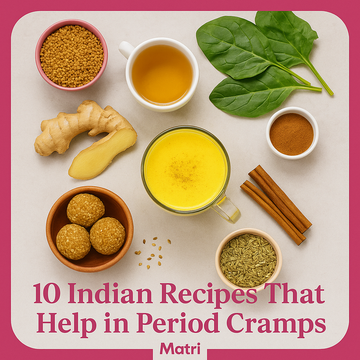Choosing the right menstrual care product can make a huge difference in how comfortable and confident you feel during your cycle. Period panties have quickly become a favorite option for many due to their ease of use, eco-friendliness, and comfort. Whether you're new to this concept or already considering a switch, this complete period panties guide will walk you through everything you need to know—from how they work to how to care for them, and why they might be perfect for your menstrual routine.
What Are Period Panties?
Period panties are a type of reusable underwear specially designed to absorb menstrual blood. They come with built-in layers that wick moisture, trap fluid, and prevent leaks. Unlike regular underwear, these are engineered to offer the protection of traditional menstrual products without needing to insert or attach anything.
They are available in a variety of styles, sizes, and absorbency levels, offering a tailored experience for different body types and flow intensities. For people who prioritize menstrual cycle comfort, period panties are soft, breathable, and chemical-free, making them a healthier alternative to disposables.
How Do Period Panties Work?
The technology behind period panties is simple but effective. Most designs feature three to four layers. The top layer draws moisture away from the body to keep you dry. The second layer absorbs the fluid. The third layer acts as a leak-proof barrier to protect your clothes. Some brands also include a fourth antimicrobial layer to reduce odor and bacterial growth.
Depending on the absorbency level, period panties can hold the equivalent of one to five tampons’ worth of blood. They can be worn alone or as a backup with a tampon or cup, especially on heavy flow days. When properly chosen and worn, they provide leak-free protection for up to 12 hours.
Benefits of Using Period Panties
Period panties offer a number of advantages over traditional pads and tampons. They’re reusable, reducing waste and saving money in the long run. Since they’re made from soft, breathable fabrics, they reduce the risk of chafing, rashes, or allergic reactions. For those looking to improve their menstrual cycle comfort, this is a major benefit.
They also eliminate the discomfort of changing pads every few hours or worrying about tampon leaks. With the right absorbency level, period panties can keep you dry and protected all day or night, allowing you to go about your daily routine without interruptions.
Can You Wear Period Panties All Day?
Yes. You can wear period panties all day if your flow is moderate and the pair you’re wearing has enough absorbency. Many high-absorbency styles are designed to be worn for up to 10–12 hours without leaks. However, this depends on your personal flow and comfort preferences. On heavy flow days, you may need to change more frequently or use them as backup with another product.
Understanding how often to change period panties is key to staying fresh and hygienic. If they start to feel wet or heavy, it’s time to switch. You may also want to carry an extra pair with you just in case, especially when you're away from home.
How to Use Period Panties
Using period panties is simple. You wear them just like regular underwear. Choose a style that matches your flow level—light, moderate, or heavy. On light days, one pair may last you all day. On heavy days, you may need to change once or twice.
After wearing them, rinse them in cold water to remove excess blood. Then, wash them either by hand or in the washing machine using a mild detergent. Air drying is best to preserve the waterproof and absorbent layers. With the right care, reusable period underwear can last anywhere from 2 to 5 years.
Best Period Panties for Beginners
If you're new to period underwear, it’s important to start with the right product. The best period panties for beginners are those that offer full coverage, moderate to high absorbency, and a comfortable fit. Look for trusted brands that clearly mention absorbency levels and use natural fabrics like cotton or bamboo.
Beginner-friendly options often include styles like hipsters or briefs which feel just like everyday underwear. These can help first-time users adjust to the idea without any discomfort or uncertainty. Consider starting with a small set, trying them on lighter flow days first, and gradually expanding your collection once you’re comfortable.
How Many Period Panties Do You Need?
The number of period panties you need depends on how often you plan to use them and how frequently you do laundry. For those who use them full-time during their cycle, having at least 4 to 6 pairs is ideal. This allows you to rotate while others are being washed and dried. If you’re using them as backup protection or only at night, 2 to 3 pairs may be enough.
Are Period Panties Right for You?
Period panties are a great option for people who want a more comfortable, eco-conscious, and low-maintenance approach to period care. They're especially helpful for young teens, those with sensitive skin, or anyone tired of the hassle that comes with pads and tampons. If you lead a busy lifestyle or have irregular periods, period panties can also be a reliable option for unexpected spotting.
With proper care, they’re cost-effective and can improve your overall period experience. This complete period panties guide is here to help you make an informed decision and embrace a cleaner, simpler way to manage your menstrual cycle.
FAQs
1. Can you wear period panties all day?
Yes. You can wear period panties all day if your flow is light to moderate and the panties have the right absorbency. On heavier days, you may need to change them once or pair them with another product for added security.
2. How often should you change period panties?
Period panties should be changed every 8 to 12 hours, depending on your flow. If they begin to feel wet or heavy, it’s time for a fresh pair. Listening to your body and checking how the panties feel will help you stay comfortable and leak-free.
3. Are period panties suitable for heavy flow?
Yes. Many brands offer high-absorbency period panties that can hold up to five tampons’ worth of blood. These are ideal for those with heavy flow, especially when worn during the day or overnight. Always check the absorbency level before purchasing.
4. Are period panties safe for sensitive skin?
Yes. Most period panties are made from breathable, hypoallergenic fabrics like organic cotton or bamboo. They are free from harsh chemicals and fragrances, making them a safe choice for people with sensitive skin or allergies.
5. How long do reusable period underwear last?
With proper care, reusable period underwear can last anywhere from 2 to 5 years. Washing them gently, avoiding fabric softeners, and air drying will help preserve their absorbent and leak-proof properties over time.
6. What are the best period panties for beginners?
The best period panties for beginners are those with full coverage and moderate to high absorbency. Look for soft fabrics, clear sizing, and positive user reviews. Brands that offer starter kits are also a good place to begin.
7. Can period panties be worn overnight?
Yes. Many people use period panties overnight, especially those with heavy absorbency. They provide leak-proof protection while you sleep, helping you wake up feeling dry and comfortable without needing additional pads or liners.
8. How do you wash period panties properly?
Rinse them in cold water first, then wash by hand or in a machine using mild detergent. Avoid fabric softeners and bleach. Air dry them instead of using a dryer to maintain their absorbency and extend their lifespan.
9. Can you wear period panties during workouts?
Yes. Period panties are great for physical activity. Look for athletic-friendly styles with moisture-wicking fabric and high absorbency to stay comfortable during exercise, sports, or yoga.
10. Do period panties smell after use?
No. When rinsed and washed properly, period panties do not smell. The moisture-wicking and antimicrobial layers help manage odor naturally. Regular cleaning and proper drying keep them fresh and hygienic.






